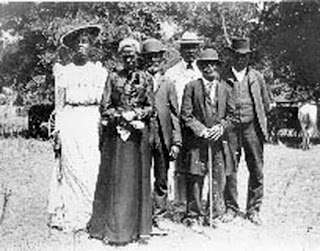The role of vitamin D in halting and reducing subclinical cardiac damage in African-Americans suffering from high blood pressure.
DETROIT - A Wayne State University School of Medicine physician researcher has received a $1.9 million National Institutes of Health grant to study the role of vitamin D in halting and reducing subclinical cardiac damage in African-Americans suffering from high blood pressure.
Phillip Levy, M.D., M.P.H., associate professor of emergency medicine and resident of Farmington Hills, Mich., will use the five-year grant to determine how vitamin D affects cardiac structure and function, and vascular function in blacks with hypertension. The research could identify vitamin D as a safe, effective and inexpensive therapy to stop, and even reverse, cardiac ravages caused by high blood pressure.
"This project focuses on a vulnerable demographic subgroup at high-risk for hypertension, poor blood pressure control and, consequently, adverse pressure-related cardiovascular complications," Levy said. "Vitamin D is an inexpensive therapeutic intervention, which, if shown to be efficacious, could greatly enhance the existing approach to secondary disease prevention in a widely accessible, cost-effective manner."
The study will include Detroit Receiving Hospital emergency department patients between the ages of 30 and 74, who come to the hospital with poorly controlled chronic hypertension but no prior history of secondary cardiovascular disease. Levy said 267 patients who agree to participate in the study will be screened, with the anticipation that 75 percent will have vitamin D deficiency. Those with vitamin D deficiency will then undergo cardiac magnetic resonance imaging to screen for increased left ventricular mass. Based on prior work funded by the Robert Wood Johnson Foundation Physician Faculty Scholars Program, Levy anticipates that 60 percent of those evaluated by MRI will have left ventricular hypertrophy resulting in a final sample of 120 patients. These study enrollees will be randomized to receive blood pressure control with additional placebo or vitamin D supplements for an entire year.
Levy said patients enrolled in the study will receive 50,000 international units (IU) of vitamin D3 every other week, an amount consistent with current therapeutic recommendations. The supplement will be provided in a liquid gel capsule. Most people who take vitamin D purchased over the counter ingest 1,000 IU daily.
Levy expects to find that individuals who receive vitamin D therapy will experience a regression in left ventricular mass beginning 16 weeks after they start taking the supplements. That regression should continue and increase in magnitude over the course of a year. Myocardial fibrosis, which comprises much of the increase of left ventricle mass in those with hypertension, should decrease. Other expected outcomes include improved vascular function with a decrease in central and possibly peripheral blood pressure.
"Vitamin D's effectiveness in further reducing left ventricle mass would decrease the risk of cardiovascular disease complications in African-Americans," Levy said.
Additionally, if serum markers parallel MRI findings in the study, Levy said, they could then serve as a screening and assessment tool.
Levy will serve as the principal investigator for the study. His research mentor, John Flack, M.D., M.P.H., professor and chair of internal medicine, and Rafael Fridman, Ph.D., professor of pathology, will be co-investigators.
"There are biologically plausible mechanisms through which vitamin D deficiency can cause or contribute to left ventricular hypertrophy," Flack said. "Populations, such as African-Americans, who manifest high rates of vitamin D deficiency also have excessive rates of left ventricular hypertrophy. The test of whether moderate- to high-dose vitamin D replacement can regress left ventricular hypertrophy is long overdue. Vitamin D is safe, reasonably cheap, and has enormous, but mostly unproven, therapeutic potential."
# # #
Wayne State University is one of the nation's pre-eminent public research universities in an urban setting. Through its multidisciplinary approach to research and education, and its ongoing collaboration with government, industry and other institutions, the university seeks to enhance economic growth and improve the quality of life in the city of Detroit, state of Michigan and throughout the world. For more information about research at Wayne State University, visit http://www.research.wayne.edu.
Wayne State University Release Date: June 02, 2011 Contact: Julie O'Connor Voice: 313-577-8845 E-mail: julie.oconnor@wayne.edu

































